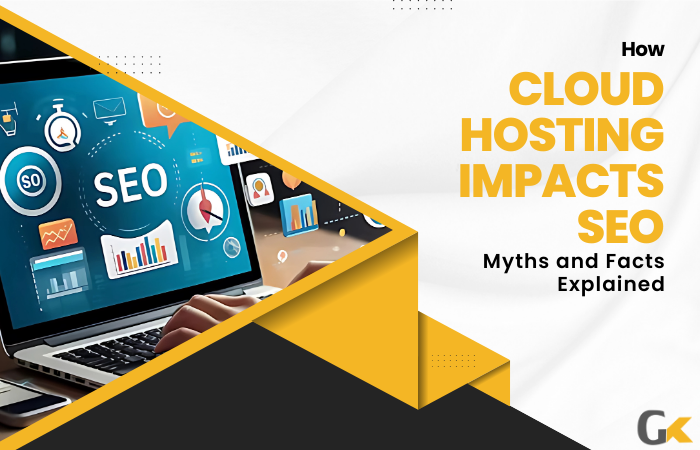Cloud computing has revolutionized the way businesses operate, providing numerous benefits such as scalability, cost-efficiency, and flexibility. However, with great power comes great responsibility. Cloud misconfigurations pose a significant threat, potentially leading to breaches, data leaks, and financial losses. To fortify your cloud environment, it’s crucial to understand how to prevent cloud attacks. Stay informed about cloud security statistics, addressing vulnerabilities and proactively mitigating risks.
![]()
Regular assessments can safeguard against the consequences of cloud misconfigurations, ensuring a resilient and secure cloud infrastructure for your business. Stay ahead in the cloud landscape by adopting preventive measures against evolving threats. Misconfigurations in cloud services can lead to serious cloud misconfiguration breaches, data leaks, and financial losses. To ensure the integrity and security of your cloud environment, it is essential to adopt preventive measures.
Read more: Benefits of Using Managed IT Services
6 Effective Ways to Prevent Misconfiguration
Here we’ll delve into six powerful strategies to safeguard your cloud environment and prevent potentially disastrous cloud misconfigurations. Learn how to mitigate cloud computing vulnerabilities, backed by insightful cloud security statistics. Our step-by-step approach equips you with the knowledge on how to prevent cloud attacks, ensuring your organization is resilient against evolving threats.
By addressing and averting cloud misconfigurations, you can fortify your cloud infrastructure, mitigating the risk of breaches and maintaining the integrity of your data and operations. Stay ahead in cloud security with these proactive measures. In this article, we will explore six effective ways to prevent misconfiguration in the cloud service:
1. Implement a Well-Defined Cloud Security Strategy
Developing a well-defined cloud security strategy involves assessing potential risks, defining security policies, and establishing access controls. Conduct a thorough risk assessment to identify vulnerabilities and potential threats to your cloud infrastructure. Based on the assessment, create a set of security policies that outline best practices and guidelines for your organization.

Begin with a meticulous risk assessment to identify areas prone to cloud misconfigurations and potential cloud misconfiguration breaches. These policies should cover areas such as data encryption, network security, user access controls, and incident response procedures. Regularly review and update your security strategy to adapt to evolving threats and industry standards.
By incorporating these measures into your strategy, you not only fortify your defenses but also proactively mitigate the risk of cloud attacks, fostering a secure and resilient cloud environment for your organization.
Read more: choose vpn boost protection
2. Leverage Cloud Service Provider’s Security Features
Cloud service providers offer a range of security features and tools that can bolster the security of your cloud environment. Familiarize yourself with the available features provided by your Cloud Service Provider, such as Identity and Access Management (IAM), encryption mechanisms, network security groups, and logging services.
Leveraging the security features provided by Cloud Service Providers (CSPs) is pivotal in addressing potential cloud computing vulnerabilities. Ensure a robust defense against cloud misconfigurations by familiarizing yourself with features like Identity and Access Management (IAM), encryption protocols, network security groups, and comprehensive logging services.
Implement these features effectively based on your organization’s security requirements. For example, enforce strong password policies, utilize encryption for sensitive data, enable logging and monitoring services, and set up automated alerts for suspicious activities.
Understanding the capabilities of your CSP’s offerings equips you with the tools necessary to proactively prevent cloud attacks. Stay informed about the latest cloud security statistics, empowering your organization to make informed decisions and fortify its cloud infrastructure against evolving threats.

Read more: digital brand strategy
3. Automate Configuration Management
Manual configuration processes can be error-prone and time-consuming. Adopting automation through infrastructure-as-code (IaC) platforms like AWS CloudFormation or Azure Resource Manager enables you to define and manage your cloud infrastructure programmatically.
By using declarative templates or scripts, you can automate the provisioning and configuration of your cloud resources. This approach ensures consistency across your infrastructure, minimizes human errors, facilitates easier auditing and version control, and allows for rapid deployment and scaling.
4. Adopt Least Privilege Principle
The principle of least privilege is based on granting users and services only the minimum necessary permissions to perform their tasks. Avoid granting excessive privileges, as it increases the risk of misconfigurations and unauthorized access. Regularly review and audit user and service access privileges to remove unnecessary permissions promptly.
Implementing multi-factor authentication (MFA) adds an extra layer of security, requiring users to provide additional verification, such as a code from their mobile device, to access critical resources.
5. Continuous Monitoring and Auditing
Continuous monitoring and auditing of your cloud environment help detect and address misconfigurations and cloud misconfiguration breaches in real-time. Utilize cloud-native monitoring tools provided by your Cloud Service Provider or consider using third-party solutions that integrate with your cloud infrastructure. Set up alerts and notifications for suspicious activities, unauthorized access attempts, or configuration changes.

Implement a centralized logging system and regularly review logs to identify any anomalies or potential misconfigurations. Conduct periodic audits to ensure compliance with security policies and industry regulations.
Read more: Endpoint Protection Tips
6. Regular Security Assessments and Penetration Testing
Periodic security assessments and penetration testing are crucial to proactively identify vulnerabilities and misconfigurations in your cloud infrastructure. Engage third-party security experts or conduct internal assessments to evaluate the effectiveness of your security controls.
Penetration testing involves simulating real-world attacks to identify weaknesses that could be exploited by malicious actors. Regularly addressing these vulnerabilities through patching, configuration updates, or architecture enhancements helps prevent misconfigurations and strengthens your overall security posture. This simulated attack methodology uncovers weaknesses that might be exploited by malicious entities. Mitigate the risks of cloud misconfigurations by systematically addressing vulnerabilities through timely patching, configuration updates, and architecture enhancements.
This vigilant approach not only fortifies your defenses but also prevents potential cloud attacks. Stay informed with the latest cloud security statistics to guide your efforts, ensuring a resilient security posture for your cloud environment against evolving threats.
FAQs
Industry Experiences
Innovative services for your business
We’re dedicated to making your businesses reliable, efficient, and safe.
We’re a one-stop solution for everything IT you need. Whatever you need, we got you covered:
Misconfiguration in the cloud can occur due to various reasons, such as human error, lack of understanding of security best practices, misaligned access controls, or inadequate configuration management processes.
Additionally, rapid changes in cloud environments, improper resource provisioning, and failure to follow established security guidelines can also contribute to misconfigurations.
Concerned about misconfigurations? Contact us for expert analysis and solutions to safeguard your cloud infrastructure.
Automation plays a crucial role in preventing misconfiguration by reducing human error and ensuring consistency across cloud resources. Tools like infrastructure-as-code (IaC) enable you to define and manage your cloud infrastructure programmatically, reducing the chances of misconfigurations caused by manual processes.
Automation also allows for easier auditing, version control, and the ability to quickly replicate and scale cloud resources with minimal risk of misconfigurations. Take control of your cloud security with GoGeekz! Implement continuous monitoring and auditing to thwart misconfigurations and breaches.
Implementing the principle of least privilege requires careful management of user and service access permissions. Some best practices include conducting regular access privilege audits, removing unnecessary permissions promptly, implementing multi-factor authentication (MFA) for added security, and enforcing strong password policies.
It is also crucial to regularly review and update access controls as the roles and responsibilities of individuals within your organization change.
Continuous monitoring and auditing of your cloud environment provide real-time visibility into potential misconfigurations and security breaches.
By leveraging cloud-native monitoring tools or third-party solutions, you can set up alerts and notifications for suspicious activities, unauthorized access attempts, or configuration changes. Ensure cloud security with GoGeekz!
Regularly reviewing logs and conducting periodic audits enables you to detect and address misconfigurations promptly, ensuring the ongoing security of your cloud infrastructure.





